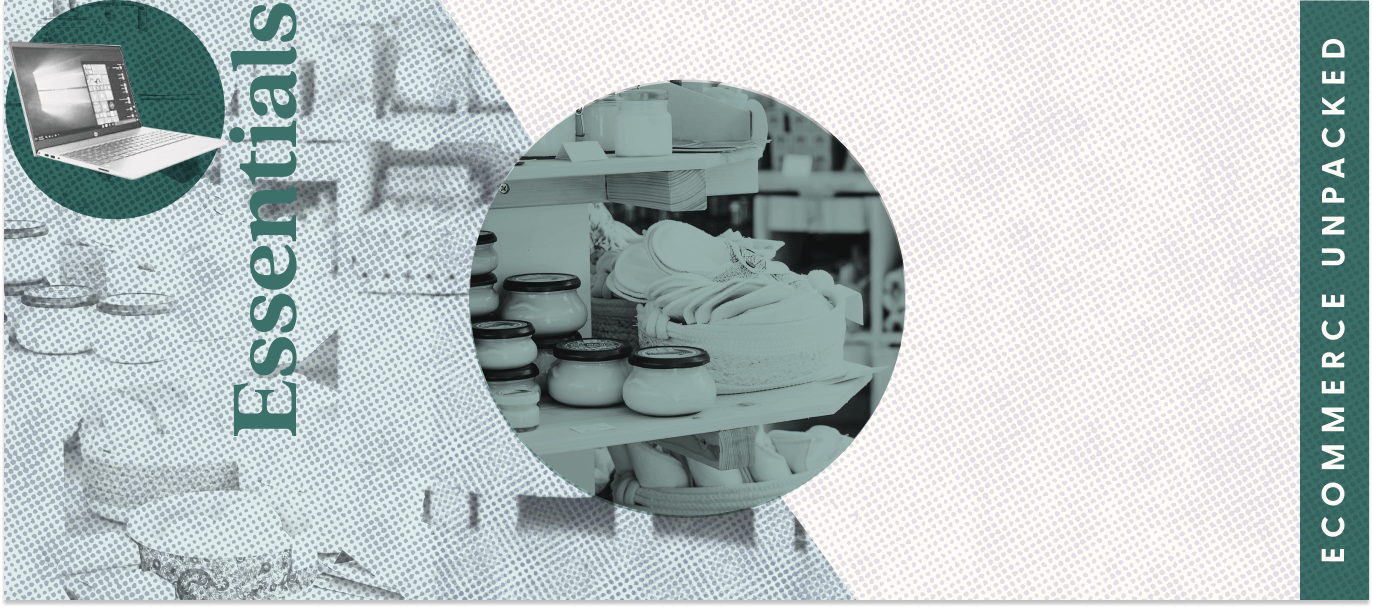There are many KPIs (key performance indicators) to help measure the performance of a Shopify store. These include sales, revenue, conversion rate, average order value—the list goes on. All those metrics are important, but they don’t always paint a clear picture of your store’s future revenue. For that, you need to know your customers’ lifetime value (LTV).
Lifetime value is the amount your average customers spend over the course of their relationship with your brand. If you’re looking to grow your Shopify business, LTV is a key metric to focus on. Now, let’s look at some ways you can improve your LTV.
Key takeaways
- Increasing customer lifetime value (LTV) is crucial for the long-term success of an ecommerce business.
- While acquiring new customers can come with thin margins, retaining customers can lead to wider margins, steadier cash flow, and more opportunities for growth.
- Three of the most effective ways to help boost LTV are strategic marketing efforts, healthy customer acquisition pipelines, and superior customer service.
The impact of higher LTV
Many ecommerce businesses make conversion rates their focus because they want to make sure they are driving as many individual sales as possible. The catch is that converting new customers can be expensive. The costs associated with customer acquisition keep margins thin and growth incremental.
By contrast, optimizing for LTV can help with more sustainable growth. Here are some of the ways a higher LTV can impact your business:
Greater profitability
Higher LTV indicates a greater number of orders from existing customers. Why settle for only one order from customers you’ve already paid to acquire? Repeat orders mean steadier cash flow and fuller profit margins, which means higher ROI. This is a cycle you want to perpetuate.
More confidence in your marketing spend
Knowing how many repeat orders—on average—you can count on from your target customer means you know how much you can afford to spend to acquire those customers. When you can spend more, you can potentially outbid more competitors, which can help you win more loyal customers, repeat buyers, and ambassadors for your brand.
Opportunities for business growth
Those repeat orders and higher margins create opportunities to reinvest in your business. Expand into new markets. Hire crucial talent. Create new products informed by all the customer data you get from those repeat orders. A higher LTV helps give you the stability to make real progress.
Stronger customer loyalty
If customers are reliably coming back to your store to make more purchases, it means you’re doing something right. It suggests they’re satisfied with your service and/or products. It indicates real brand loyalty. It’s a powerful metric to show employees and potential investors, and it can guide you as you refine your marketing campaigns and consumer targeting.
Improving the LTV of your Shopify customers
Now that we’ve seen why a higher LTV is worthwhile, let’s explore some practical ways to help get that number up.
Try email marketing campaigns
Email may seem like a dated communication medium, but it’s still a powerful marketing tool. The average open rate for ecommerce email campaigns is over 15%. In other words, if an ecommerce marketing email is sent to 100 customers, an average of 15 of them will actually open that email.
Compared with other forms of digital advertising, this is a remarkably high average. This makes it a channel well worth activating to help boost your LTV.
To that end, consider capturing email addresses when customers complete purchases. Offer free and useful content in exchange for email addresses. As you grow this email list of engaged customers, you can begin sending periodic marketing emails.
These emails can contain updates on new products, special offers and promotions, and informational content your customers will find useful or interesting. You can even include discount codes exclusive to your email campaigns.
It’s important not to spam your customers—pay attention to your unsubscribe rate to make sure you’re not overwhelming them. But with the right cadence, you can keep a healthy level of visibility in their inboxes. Time your email campaigns to coincide with what you know of your customers’ behavior, and take advantage of holidays and seasonal activity to boost sales.
As a bonus, by watching the open and click through rates of various emails, you can learn what kind of subject lines, calls to action, and promotions work best for your audience, and optimize as you go.
Build your pipeline through subscriptions & upselling
So far we’ve covered methods that involve some level of sustained time and effort. It’s also worthwhile to develop and maintain a strong customer pipeline that can help generate repeat orders all on its own. This can be achieved through various tactics, including:
- Upselling is a sales tactic aimed at convincing customers to buy a premium version of a product or service they’ve previously purchased. It’s fertile ground for peddling pricier products or services, since your chances of selling to an existing customer is 60% to 70%, compared to 5% to 20% with a new customer. Think of that initial lower-cost purchase as a primer for the more premium version.
- Cross-selling is a similar tactic, in which you recommend products or services that complement a product or service the customer is about to purchase or has already purchased. Think of the way grocery stores put sodas near the chips on their shelves. It’s another method of taking advantage of the buying mindset of customers who already have something in their shopping cart.
- Subscription services capitalize on customers’ love of convenience. Research shows that 15% of online shoppers have signed up for at least one subscription service to receive recurring products. Consider starting a subscription service, by which customers can order your product automatically and on a recurring basis. This can help turn one-time customers into recurring customers, while also providing predictable revenue and lowering your overall cost per sale.
Earn customer loyalty through quality service
When it comes to effective ways to boost your LTV, it’s hard to compete with superior customer service. In a recent survey, 89% of customers said positive customer service experiences encourage them to make another purchase. Therefore, as you explore all the tactics mentioned above, don’t forget to invest serious time, energy, and resources into crafting great customer experiences at every stage. Consider the following measures:
- Improve your customer support. Set up an automated live chat or help desk to address common issues. Bulk up your FAQs and help pages so customers can find answers on their own, and make it easy for them to contact you, in case none of that does the trick.
- Collect feedback. Invite your customers to share their opinions about you. This can not only make your customers feel heard and valued; it also generates data you can use to optimize your customer service.
- Deliver fast. Today’s customers expect fast delivery, and nearly half of them will abandon their cart if shipping times are too long. Optimize your order receiving, processing, shipping, and last mile delivery to help ensure your customers don’t go looking for a faster option.
- Refine your returns process. Returns aren’t just an inevitable part of selling products—they’re a vital part of your customer experience. Research shows that 33% of repeat customers will abandon a retailer because of a difficult return process. Make sure to optimize your reverse logistics and make your return policy clear.
- Don’t just satisfy—delight. Go above and beyond to make your customers feel appreciated and respected. Surprise them with a discount offer after their first purchase. Pay attention to every little detail of their experience, from the look and feel of your online store to the way your products are packaged. And above all, foster a company culture of superior customer service.
Consider other marketing channels to increase expose
One key way to help boost your LTV is to stay on your customers’ minds. The more they see you, the more likely they are to buy from you again. As they move around the internet, you want to show up as often as you can in the right settings. There are multiple ways to achieve this, including:
- Pay-per-click (PPC) advertising: You pay to have your ad appear on the search engine result page (SERP) for specific keywords or phrases. The fee you pay is based on the number of users who click on your ad. This can be effective, though it is strictly limited by your budget and competitors can outbid you by spending more.
- Search engine optimization (SEO): You can use SEO to strategically improve and expand the content on your website, with the goal of organically showing up near the top of those same SERPs. Done well, this can increase the quality and quantity of your web traffic, and drive traffic without additional cost (since you don’t have to pay for each click).
- Posting on social media platforms: Facebook, Instagram, TikTok, and LinkedIn are just a few examples of social media platforms to consider. Sharing content that’s relevant to your target customer can help increase exposure and generate genuine interaction with those customers.
- Content marketing: You create, post, and share content that’s useful to your target customers. By providing free and valuable information, you can increase your visibility and your customers’ confidence in your brand.
- Video content: More than 92% of internet users watch video content every week. Video is a flexible and overwhelmingly popular method of showcasing products and services, sharing useful information and tutorials, and communicating the personality and values of your brand. One solid piece of video content can be used on your website, on social media platforms, and in paid advertising.
Your customers are bombarded with advertisements, entertainment, and information, all competing for their attention. By increasing their exposure to your brand across channels, you can keep from getting lost in the noise and help boost those LTV numbers.
Cracking your LTV code
The winning formula for boosting the LTV of Shopify customers won’t be the same for all online stores. Experiment with the above tactics and methods, and learn from the outcomes of each. Reinvest in what works for your customers, and optimize as you go. It’s not always a quick code to crack, but the potential rewards for your company are worth the effort.
FAQs on improving the LTV of your Shopify customers
- How do I calculate LTV?
The simplest formula is net sales / total customers. Learn more about the impact that subscriptions can have on increasing your LTV.
- What is a good LTV?
A good way to measure the quality of your LTV is by calculating your LTV:CAC (customer acquisition cost) ratio. While LTV goals vary from business to business and vertical to vertical, a ratio of around 3:1 is considered very healthy.



